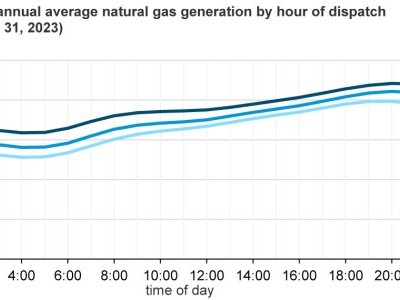Diesel prices take flight
For diesel buyers irritated by high pump prices, the future promises no relief. Moody’s Analytics projects a gradual rise to $4.50 per gallon by mid-2024. That’s well above pre-pandemic times when they stayed below $3.50 for a five-year stretch.
Given that fuel costs can account for as much as 25% to 40% of a typical trucking operation’s total expenses, any shift in the price tag can have a real effect on the bottom line. So, what’s keeping prices high?
Tight diesel supplies are the major reason. A new report from the Energy Information Agency (EIA) notes that both gas and diesel supplies are down as refineries have cut back production. “Like other commodities, long and short-term diesel price expectations are driven by supply levels,” said Trey Cowan, Oil and Gas Analyst at the Institute for Energy Economics and Financial Analysis (IEEFA). “And right now, figures from the Energy Information Agency (EIA) show that we are tracking toward five-year lows.”
Another major contributing factor is the cost of oil, which is passed right along to the diesel distillate. “Today’s crude oil price is being supported by the agreement on the part of Saudi Arabia and OPEC to maintain production at a level less than consumption,” said Allen R Schaeffer, Executive Director of the Diesel Technology Forum. “So, prices are projected to remain at their current level through 2024.”
Capping production
Given the popularity of diesel, one would expect refineries to pump out as much product as possible. But that’s not the case. It behooves some countries to reduce output to bolster the price tag of an important export. Furthermore, there is a cost problem to consider: If pump prices drop too low, making the fuel is just not feasible.
“Over the years, refiners in the United States have reduced capacity due to poor margins and increased environmental costs, as well as to the expense required to maintain facilities in a world where United States demand has peaked,” said Andrew M. Lipow, President of Houston-based Lipow Oil Associates. “Refineries are shutting down as they look ahead to how much money they will have to spend to maintain safe and environmentally compliant facilities.”
Inflation, too, increases building costs. Producers must shell out several hundred million dollars to bring a new refinery online, at a time when oil demand in the US is going down. The prudent decision may well be to shut down, and Lipow noted that two more U.S. refineries on the West Coast and Gulf Coast are planning to do just that.
Supply Relief
Russia produces some 10% of the oil from which the world refines diesel, and its ability to move its product through alternative channels has helped mitigate the global diesel shortage. “The sanctions imposed by the European Union and the United States and other countries on the purchase of Russian crude oil and refined products has forced Russia to find new customers,” said Lipow. “While the majority of their oil is sold into China and India, they have found alternative markets in North Africa and Brazil.”
Too, there is a bit of supply relief from some new refineries in parts of the world where diesel demand is growing. “Over the past year, new refineries have come on stream in Kuwait, Oman and China,” said Lipow. “There is one in Nigeria that has yet to come online, and another in Mexico which may be producing fuel in 2024.” While the additional supply is welcome, it is meager: “These new refineries will only represent an increase of some 1.5%-2.0% of world capacity.”
On the demand side, U.S. consumption is a mixed bag. As the world enters the busy travel season with greater demand for fuel, upward pricing pressure is coming from the airline sector. “There’s no doubt that increased jet fuel demand reduces, somewhat, the availability of diesel fuel,” said Lipow. Fuel for the nation’s aircraft is pulled from the same oil pool required for diesel.
Current prices are affected by consumer and business confidence. “Surveys seem to show a bit more confidence in the air,” said Cowan. “That should lead to more spending, along with stronger markets for commodities like oil, gasoline and diesel.” Expectations that the U.S. will avoid a recession this year are also putting upward pressure on prices.
Serving as a counterbalance to all of the above is downward pricing pressure from the shipping industry. “Freight activity is a big driver of demand for diesel, and thus of prices,” said Schaeffer. “We have been experiencing a drop-off in freight demand, which is a result of supply chain issues finally being resolved. We've seen a number of trucking companies go out of business as a result.”
Green Power
Peeking around the corner as a partial solution to diesel shortages is the increased production of “renewable diesel,” an eco-friendly product made from vegetable oils and fats. Sometimes called “green diesel,” renewable diesel is virtually chemically equivalent to petrodiesel. That makes it a so-called “drop-in” replacement for the fossil fuel, which means it can be dropped right into a truck’s tank without needing to be blended with its carbon-based twin. That is a significant advantage over biodiesel, an alternative eco-friendly biomass-based fuel that can only make up from 5% to 20% of a petrodiesel blend.
While the U.S. Energy Information Administration (USEIA) is projecting an increase of some 30% in the consumption of renewable diesel in 2024, the activity is mostly on the West Coast. Together, renewable diesel and biodiesel still account for only some 5% of U.S. diesel consumption. Renewable diesel production has recently surpassed that of biodiesel, and more growth is forecast. “A number of refineries have in the last three years announced they were transitioning some of their traditional petroleum refining processing into renewable diesel,” said Schaeffer. “Many mainstream oil companies are putting their fingers into renewable diesel at some level, which will help boost growth.” At the federal level, tax credits are encouraging producers to produce more renewable diesel.
Chart: Retail Diesel Prices ($ per Gallon)
| Oct 2020: | $2.38 |
| Jan 2021: | $2.68 |
| Apr 2021: | $3.13 |
| Jul 2021: | $3.33 |
| Oct 2021: | $3.61 |
| Jan 2022: | $3.72 |
| April 2022: | $5.12 |
| Jul 2022: | $5.49 |
| Oct 2022: | $5.21 |
| Jan 2023: | $4.57 |
| Apr 2023: | $4.09 |
| Jul 2023: | $3.88 |
| October 2023: | $4.44 |
| January 2023: | $3.85 |
| *June 2024: | $4.50 |
Source: U.S. Energy Information Administration; projections by Moody’s Analytics
Similar Stories
Next US LNG export plant aims to begin production in mid-2024
Venture Global LNG Inc. expects to begin production at its second liquefied natural gas export facility in Louisiana in mid-2024, further cementing to the US as the world’s biggest supplier…
View Article
Sanctioned tankers giant passage to India is test case for oil
View ArticleAdnoc buys Iraqi oil in plan to export its own more pricey crude
United Arab Emirates oil giant Abu Dhabi National Oil Co. imported a crude oil cargo in a rare move after upgrading its only refinery, which will allow it to sell…
View Article
Today in Energy: U.S. natural gas-fired electricity generation consistently increased in 2022 and 2023
View ArticleSurveying the world’s path from fossil fuels to clean energy
Energy executives warn that it will be a long and costly journey, while activists and analysts say there are significant rewards and little time to waste.
View Article
IAG Cargo transitions 160-truck fleet at London Heathrow to hydrotreated vegetable oil
View ArticleGet the most up-to-date trending news!
SubscribeIndustry updates and weekly newsletter direct to your inbox!





